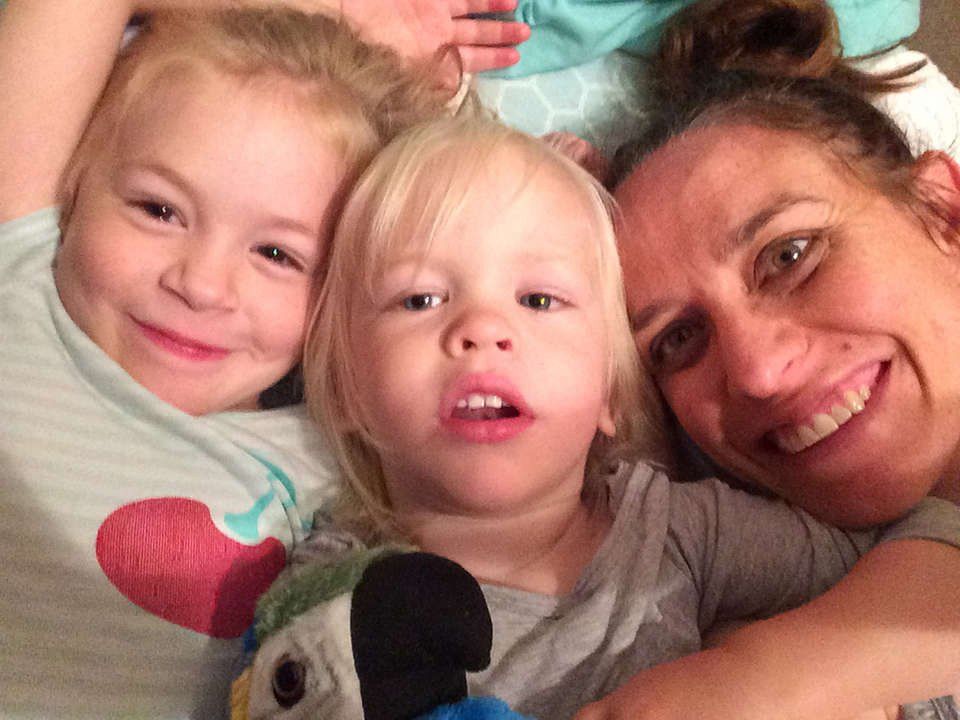Lullabies: by guest author Shevonne Hunt
- By Robin Barker
- •
- 04 Jul, 2017

Kinderling Kids Radio is celebrating Lullabies with stories on Kinderling Conversation, a brand-new podcast with Dr Anita Collins called “The Lullaby Effect” and special compilations of lullabies during their early evening program Settle Petal.
For more information check out their website.
*
Why lullabies are good for your kids, and you too!
I sing to my kids every night. Part of my repertoire includes two songs that my mother sang to me: Morning Town Train and Christopher Robin is Saying His Prayers. There’s something powerful about singing a song from my own childhood. It’s a soft-focus kind of memory, where the feelings are strongly tied in to the tune and lyrics. When my Mum sang to me it felt like I was the only person in the world for her. I felt protected, loved, and wrapped in her soft voice. It was the best way to fall asleep. And that’s how I want my kids to feel when I sing to them.
Lullabies are something parents do all around the world. The lyrics range from soothing words that would calm anyone to sleep, to some quite disturbing ideas (just look at “Rock a Bye Baby”).
We sing for different reasons, some sing to connect with their culture and traditions, some simply to remember their own childhood, and others to create something new with their family.
The lyrics and reasons may vary but ultimately, we all want the same thing, to get a baby or child to sleep.
So is there any science behind the method? Does singing help our children into the land of nod?
Dr Anita Collins is a researcher in the impact of music education on cognitive development. She’s just returned from a whirlwind tour of the United States, Canada and Europe, visiting labs and finding out the latest in the science behind babies, brain development and music.
“There is some excellent research that tested if there was a difference between the time it took for a baby to settle into sleep when they were held and then when they were in their cot and sung to. Amazingly the babies settled significantly faster when they were sung to and not held”.
In fact, researchers have found a way to measure how singing, and moving with your baby promotes connection. While Anita was overseas she was able to watch an experiment with a 4 month old baby and his mother.
“Both participants were wired up with wireless detectors for changes in body heat, respiration and heart beat. What was incredible to observe was that in real time I could watch these seemingly unrelated wavy lines suddenly jump together and move in exactly the same direction. The researchers call this synchronicity, and it came on just after the mother started singing a well-known lullaby to her son”.
In America musicians at Carnegie Hall have recognised the power of song and music for mums and their babies.
The Lullaby Project began in 2011 in a New York Hospital. Nurses from the obstetrics unit had contacted composer Thomas Cabaniss, asking if he could help teach teenage Mums how to write and sing lullabies for their new babies.
Their goals were to help new Mums connect with their babies, create a more hopeful future for the women and their children, and to give the Mums a sense of agency and self-confidence.
Musicians and composers work with the Mums, helping them write lullaby lyrics for their unborn child, and creating a melody to go with it.
To date over 500 mothers have taken part in the project. Elsa Negron, a young Mum who took part in the project said it gave her hope for the future, “being a part of this has changed my thinking about going back to college and realizing what other skills or hobbies I have that I didn’t recognise before. It just goes to show you that even when you have a bump in the road to success, something great is waiting for you at the end of the tunnel.”
And you don’t need to worry about whether you’re in tune or not. Anita Collins says your child doesn’t care.
“As long as the singing voice changes pitch up and down, as long as it is at the right volume for the baby (not too loud) and it is coming from a person they feel comfortable and safe and synchronised with then it works. Your baby thinks you are the greatest rock star there is when you are singing to them, so the key doesn’t really matter”.
When I started singing to my kids, I chose what I wanted to sing. Now we have a very predictable line up. Inexplicably it now includes Silent Night, the two songs my Mum sang to me, and Bella Mama as the pièce de résistance.
But is there any science behind which songs we sing to our kids? Is Twinkle Twinkle Little Star a sure winner? What about the classic Rockabye Baby? Have I been singing the wrong songs all this time?
Anita says that ultimately, successful lullabies are determined by human experience.
“Lullabies tend to be short, maybe 4 lines, have small musical intervals, are very memorable, have a slow tempo and a predictable structure. When we look across cultures these are some of the common musical characteristics. Science is trial and error and lullabies have had a great deal of trial and error to figure out the magic formula for babies and sleep.”
And so far, my trial and error has worked out the perfect combination, because by Bella Mama my beautiful girl is normally fast asleep.
*

Robin Barker: Baby Love, The Mighty Toddler, Close To Home